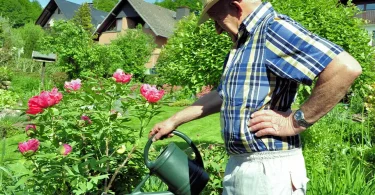When it comes to successful gardening, most people focus on soil type, watering schedules, or fertilizer. While these factors matter, there’s one essential element that often gets overlooked plants for microclimates. Understanding the microclimates within your garden can transform the way you choose plants, improve survival rates, and maximize growth. This guide breaks down everything you need to know about identifying microclimates and selecting the perfect Plants to help your garden thrive.

Why Microclimates Matter
Plants are incredibly sensitive to temperature, light, and moisture. A plant that fails in one part of the garden may thrive just a few meters away in better conditions.
Here’s why understanding microclimates is crucial:
- Improves plant survival and reduces failures
- Supports healthier, more vigorous growth
- Helps you push hardiness boundaries
- Maximizes bloom and harvest yields
- Prevents heat, frost, or wind damage
In short, choosing the right Plants for Microclimates ensures your garden works with nature, not against it.
Types of Microclimates in Home Gardens
Different areas of your garden create unique micro-environments. Below is a table summarizing common microclimates and the conditions they offer.
Common Garden Microclimates & Their Characteristics

| Microclimate Type | Description | Typical Conditions | Best Plant Types |
|---|---|---|---|
| Full Sun Areas | Open spaces exposed to sunlight most of the day | Hot, dry, bright | Drought-tolerant flowers, herbs, vegetables |
| Partial Shade | Areas receiving morning sun but afternoon shade | Moderate light, cooler | Ferns, hydrangeas, hostas |
| Deep Shade | Areas blocked by trees, walls, or tall buildings | Low light, moist | Shade-loving foliage plants |
| Windy Zones | Corners or open spaces with strong breezes | Dry, cooler, stress-prone | Hardy shrubs, ornamental grasses |
| Frost Pockets | Low-lying areas where cold air settles | Cold nights, high frost risk | Cold-hardy perennials |
| Heat Traps | Near walls, patios, or stones | Warm, radiated heat | Mediterranean herbs, heat-loving plants |
How to Identify Microclimates in Your Garden
Before selecting Plants for Microclimates, you must map out the unique climate zones in your outdoor space. Here’s how:
1. Observe Sun Exposure
Track sunlight throughout the day:
- Morning sun is gentle
- Afternoon sun is intense
- Shade varies by season
Use your phone compass or a gardening app for accuracy.
2. Feel Temperature Variations
Stand in different areas during morning, noon, and evening. Some spots will feel hotter or colder due to:

- Wall heat reflection
- Wind tunnels
- Tree cover
3. Notice Moisture Levels
Wet, soggy soil indicates poor drainage, while dry, cracked soil shows fast evaporation.
4. Watch Wind Behavior
Wind funnels between buildings or open yards can dry out plants faster.
5. Track Frost Patterns
Frost tends to settle in dips or shaded parts of the garden.
Once you’ve identified these areas, you can select ideal Plants for Microclimates for optimal growth.
Plants for Microclimates

| Microclimate | Recommended Plants | Notes |
|---|---|---|
| Full Sun | Lavender, Yarrow, Tomatoes | Heat-loving, drought-tolerant |
| Partial Shade | Hydrangea, Begonia, Hosta | Avoid midday sun |
| Deep Shade | Ferns, Ivy, Liriope | Keep soil moist |
| Windy Areas | Grasses, Juniper, Sea Thrift | Choose low-maintenance |
| Frost Pockets | Peonies, Hellebores, Winterberry | Late-bloomers perform well |
Choosing Plants Based on Your Microclimate: Step-by-Step
Step 1: Map Your Garden
Draw a simple sketch and label sun exposure, wet areas, wind zones, shaded corners, and frost pockets.
Step 2: Determine Plant Needs
Check each plant’s preferred:
- Light level
- Water requirement
- Soil type
- Hardiness zone

Step 3: Match Plants to Microclimates
Use your map to place each plant where it can thrive naturally.
Step 4: Group Compatible Plants
For example:
- Place drought-tolerant plants together
- Keep moisture-loving plants near shade zones
Step 5: Monitor Progress
Watch how plants respond and adjust placements if needed.
Common Mistakes to Avoid When Choosing Plants for Microclimates
- Ignoring sunlight changes across seasons
- Planting water-loving species in dry, windy areas
- Choosing tropical plants for frost pockets
- Using the same plant type everywhere
- Overcrowding, which alters airflow and creates new microclimates
Understanding your garden’s unique environment will help you avoid unnecessary failures.

Final Thoughts
Microclimates exist in every garden, no matter how small. By learning to identify them, you unlock the secret to placing the right plants in the right spots,ensuring stronger growth, higher yields, and healthier landscapes. Whether you’re working with sunny walls, shady corners, or breezy patches, selecting the perfect Plants for Microclimates will elevate your gardening success.



